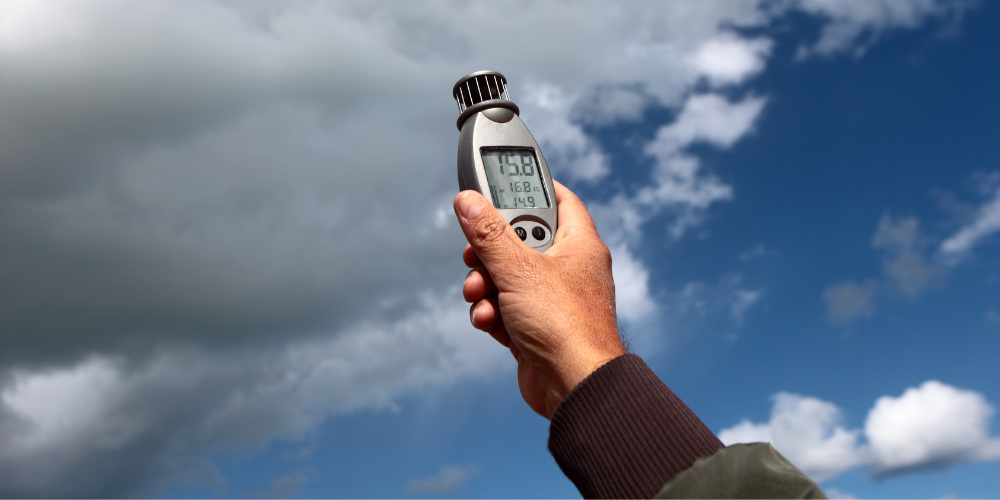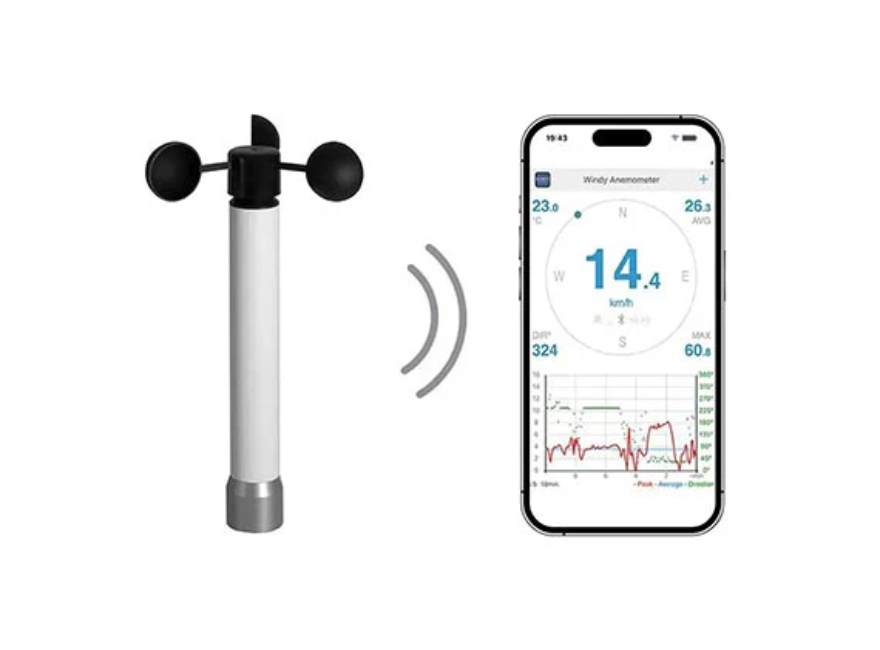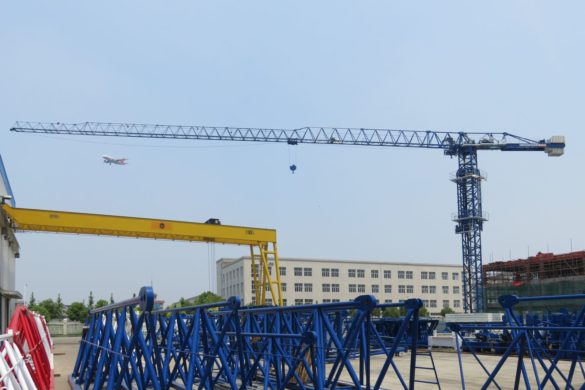Understanding wind and its behavior is important for many fields, from agriculture and aviation to engineering and industrial safety. Anemometers are key in capturing wind data, turning invisible air movements into measurable numbers that people can use. These devices help guide planning, reduce risks, and improve efficiency in daily operations. Accuracy in measurements ensures that decisions based on wind data are reliable and effective.
What Is an Anemometer?
An anemometer is a device designed to measure wind speed and sometimes direction, using different physical principles depending on its type. The science behind measuring wind involves pressure, rotation, or ultrasonic signals that respond to changes in airflow. Applications include agriculture, where farmers monitor wind to protect crops; aviation, where pilots assess wind for safe takeoffs and landings; and construction, where engineers plan structures capable of handling prevailing winds. Precise readings are critical because even slight errors can affect safety, planning, and operational efficiency.
Main Types of Anemometers
Anemometers are available in various designs, each suited to particular tasks and environments. Understanding their differences allows users to select the most appropriate tool.
Cup Anemometers
Cup anemometers operate through rotating cups that capture the force of the wind. The rotation speed is converted into a reading of wind speed. These devices are reliable for general monitoring and are straightforward to operate. Limitations include reduced performance in extremely strong winds and the need for mechanical maintenance over time.
Vane or Propeller Anemometers
Vane or propeller anemometers combine a propeller and a tail to measure both wind speed and direction. The propeller responds to airflow, while the tail aligns the device with the wind. These instruments are effective in open environments and provide continuous readings. Placement is important because obstacles nearby can disrupt accuracy.
Hot-Wire Anemometers
Hot-wire anemometers heat a thin wire and monitor how air cools it. The rate of cooling indicates wind speed, offering highly precise measurements. These devices are sensitive and respond quickly to fluctuations, but their delicate design requires careful handling. Environmental factors like dust or moisture can interfere with performance without proper maintenance.
Ultrasonic Anemometers
Ultrasonic anemometers measure wind speed using sound waves. Transducers send sound pulses, and variations in travel time caused by moving air allow the device to calculate wind speed. These instruments have no moving parts, which improves durability. Adverse weather conditions, such as heavy rain or ice, may affect readings and are often more costly than simpler types.
Pressure Tube (Pitot Tube)
Pitot tubes measure wind through differences in pressure between openings exposed to airflow. This pressure differential is converted into wind speed readings. These devices are commonly used in aviation and engineering applications due to their accuracy in steady airflow. Regular cleaning and checks are necessary because debris can block the tube and reduce reliability.
Features to Consider When Choosing One
Choosing the right anemometer requires understanding the features that match specific needs. Accuracy, durability, output type, and additional functions all influence how well a device performs in different conditions. Considering these features carefully helps ensure reliable wind data for any application, whether in a construction site, an airport, or a weather station.
Accuracy Range
Accuracy in wind measurement determines how trustworthy the readings are for decision-making. Some anemometers measure speed within a small margin of error, which is useful for scientific or industrial applications. Other models may offer general readings suitable for everyday tasks, but the precision can vary. Understanding the accuracy range allows users to select a device appropriate for the environment and purpose. Consistent readings help avoid errors that could affect planning or safety measures.
Wind Speed and Direction Capabilities
Devices differ in their ability to measure speed alone or combine it with wind direction. Certain types simultaneously provide both sets of data, which is especially useful for aviation, maritime navigation, and construction planning. Measuring only wind speed might suffice in simple monitoring tasks, but knowing the direction adds context that supports better operational decisions. Choosing a device that aligns with specific needs ensures relevant and actionable information.
Durability and Weather Resistance
Wind monitoring often occurs outdoors, exposing equipment to sun, rain, dust, and cold. Selecting an anemometer built from durable materials ensures longevity and reliable performance under challenging conditions. Some devices resist corrosion and water ingress, while others are better suited for mild climates. Understanding the expected environmental conditions helps match a model to real-world requirements. A well-built instrument reduces maintenance and prevents downtime caused by failures.
Mounting Type
Anemometers are designed for different mounting options, such as poles, tripods, or handheld setups. The installation method affects stability and the quality of measurements. Devices mounted too low or near obstacles can give skewed results. Considering the mounting type during selection allows accurate data collection and makes regular checks or adjustments easier.
Digital vs. Analog Output
Output style influences how data is recorded and interpreted. Digital devices provide instant readings and can store historical data, which supports analysis over time. Analog devices display results directly on a dial or gauge, offering simplicity and ease of use. Deciding between digital or analog depends on whether continuous recording, portability, or immediate visual reference is the priority.
Smart Features
Modern anemometers may include smart features such as wireless connectivity, app integration, or alarms for high winds. These functions can increase convenience and alert users to dangerous conditions quickly. While additional features can improve functionality, understanding their relevance to daily use ensures the device is both practical and cost-effective.
Where and How They’re Used
Anemometer uses span a wide range of industries, each requiring different levels of precision and robustness. Understanding how and where devices are used helps match the right type to the environment and task.
Common Job Site Installations
Construction and outdoor projects use anemometers to monitor wind for safety. Equipment placement at job sites provides early warnings for strong gusts, helping prevent accidents and protect workers.
Use in Weather Stations and Airports
Weather stations rely on accurate anemometers to report conditions to the public, while airports use them to guide safe takeoffs and landings. Continuous monitoring ensures timely data for operational decisions.
Marine Environments
On ships and near harbors, anemometers help navigators anticipate wind changes that affect sailing routes and docking procedures. Corrosion-resistant models are preferred in saltwater environments.
Industrial Safety Systems
Factories and plants employ anemometers to monitor airflow in critical systems, preventing hazards caused by gas leaks or ventilation issues. Accurate data supports safety protocols and operational efficiency.
Wind Energy Sites
Wind farms use anemometers to measure potential energy output and guide turbine operation. Precise readings optimize performance and contribute to effective energy management.
Installation and Maintenance Tips
Proper installation and maintenance play a major role in ensuring anemometers provide accurate and reliable readings over time. Understanding the correct positioning, avoiding obstructions, performing regular calibration, and maintenaing the device carefully can prevent errors and extend its lifespan. Each environment presents unique challenges, and attention to these factors helps users make the most of their equipment.
Best Practices for Positioning
Positioning an anemometer correctly affects the quality of measurements significantly. Placing the device at a height where wind flow is unobstructed provides consistent readings. Open spaces are ideal, and locations near tall structures or dense trees should be avoided when possible. Securing the anemometer firmly reduces vibrations and errors caused by movement during strong winds. Thoughtful placement allows devices to capture wind patterns that reflect actual environmental conditions.
Avoiding Obstruction and Interference
Wind flow can be disrupted by buildings, poles, trees, or other structures near anemometers. Obstructions create turbulence and shadow zones that can distort readings. Electrical interference from nearby equipment may also affect sensitive instruments, especially ultrasonic and hot-wire models. Evaluating the surroundings carefully before installation reduces the chance of skewed data and improves the reliability of measurements for planning and safety.
Calibration Frequency
Regular calibration ensures that anemometers continue to deliver accurate results. Different models have varying sensitivity, and high-precision devices used in aviation or engineering applications require more frequent checks. Calibration often involves comparing the device against a reference standard under controlled conditions. Maintaining a schedule for calibration and recording results supports long-term reliability and helps users identify issues before they affect operational decisions.
Cleaning and Battery Checks
Cleaning and battery maintenance are important for consistent performance. Accumulated dust, dirt, or moisture can affect moving parts, sensors, or electronic components. Removing debris gently and inspecting the instrument regularly keeps it operating smoothly. Replacing or recharging batteries on schedule prevents unexpected downtime and ensures continuous operation, especially for devices installed in remote or hard-to-access locations.
Who Uses Anemometers and Why It Matters
Wind measurement matters across many industries and professions. Accurate data helps people make informed decisions, maintain safety, and plan activities efficiently. Different users rely on specific types of anemometers that fit their environment and requirements.
Professionals Who Use Anemometers
A wide range of professionals depends on wind readings for daily work. Some examples include:
- Crane operators monitoring wind to lift heavy loads safely
- Farmers planning spraying or harvesting operations
- Pilots checking wind for takeoffs and landings
- Mariners navigating seas and docking vessels
- Construction crews ensuring site safety during strong winds
- Event organizers planning outdoor activities
Industry Needs and Device Types
Industries choose devices that match the level of precision and environmental conditions required. The aviation and engineering sectors prefer high-accuracy instruments, often digital or ultrasonic. Agriculture may use simpler cup or vane anemometers to monitor wind patterns for operational efficiency. Marine applications require corrosion-resistant designs that withstand saltwater exposure. Matching device type to industry need ensures reliability and durability.
Why Accuracy Matters
Accurate wind readings influence decisions that affect safety, productivity, and planning. In construction, errors can cause accidents or material damage. In aviation, incorrect data can disrupt flights and increase risk. Even small incuracies in farming can reduce crop protection efficiency. Ensuring trustworthy measurements allows professionals across sectors to act confidently and maintain smooth operations.
Conclusion
Understanding how to install, maintain, and choose an anemometer helps achieve reliable wind data for any purpose. Thoughtful positioning, avoiding interference, regular calibration, and proper upkeep keep devices functioning at their best. Professionals across industries depend on this information to plan safely and effectively. Learn more about how anemometers can support your work at Crane Blogger, and discover tips for selecting and using them effectively.





